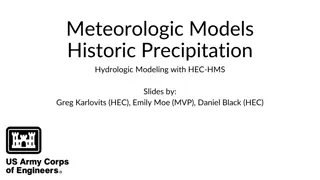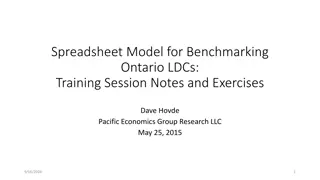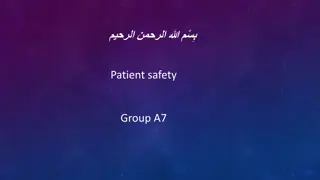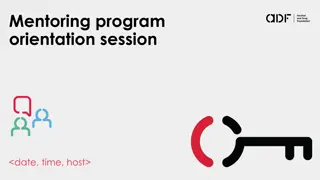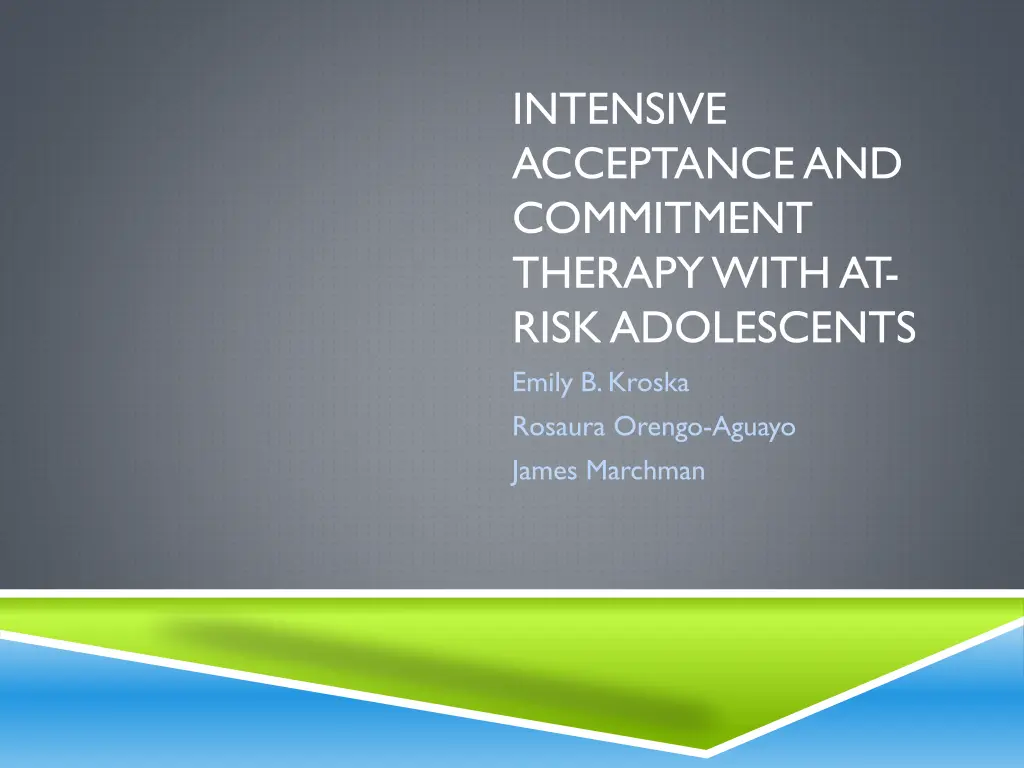
Intensive Acceptance and Commitment Therapy with At-Risk Adolescents
Explore the application of Acceptance and Commitment Therapy (ACT) in at-risk adolescents for prevention and intervention, including feasibility, outcomes, and treatment protocol. Discover how ACT can improve psychological well-being, reduce disruptive behavior, and enhance school attendance.
Download Presentation

Please find below an Image/Link to download the presentation.
The content on the website is provided AS IS for your information and personal use only. It may not be sold, licensed, or shared on other websites without obtaining consent from the author. If you encounter any issues during the download, it is possible that the publisher has removed the file from their server.
You are allowed to download the files provided on this website for personal or commercial use, subject to the condition that they are used lawfully. All files are the property of their respective owners.
The content on the website is provided AS IS for your information and personal use only. It may not be sold, licensed, or shared on other websites without obtaining consent from the author.
E N D
Presentation Transcript
INTENSIVE ACCEPTANCE AND COMMITMENT THERAPY WITH AT- RISK ADOLESCENTS Emily B. Kroska Rosaura Orengo-Aguayo James Marchman
ACKNOWLEDGEMENTS Michael O Hara James Marchman Rosaura Orengo-Aguayo Xin Yu Sarah Bannon Lauren Clevenger Julia Van Liew Rebecca Grekin Marianne Rizk Michelle Miller Lilian Dindo Teresa Treat Kristian Markon All of the ACT community!
ACCEPTANCE AND COMMITMENT THERAPY ACT across various mental and physical health conditions Experiential avoidance Research with adolescents and children is needed Community research and effectiveness studies ACT as prevention
APPLYING ACT TO PREVENTION Biglan (2008) article called for the use of ACT in prevention Can we intervene before psychopathology, bodily harm, or legal issues occur? Adolescents are particularly appropriate for prevention work
ACT IN YOUTH Three-week trial of ACT in adolescents with chronic pain improved psychological well-being, school attendance, and frequency of health visits (Gauntlett-Gilbert et al., 2012) Acceptance mediated these outcomes In psychiatric outpatients with depression, ACT significantly improved depression symptoms (Hayes et al., 2011) Disruptive behavior was decreased in both self- and parent- report measures (Hayes et al., 2010)
THE PRESENT STUDY Applying ACT to prevention science Feasibility of ACT in at-risk adolescents ACT processes Psychological or physical self-report outcomes Teacher ratings of behavior Objective outcomes, including attendance or grades
TREATMENT PROTOCOL Six-hour, one school-day, group intervention Values clarification Committed action Creative hopelessness exercises (e.g., digging) Mindfulness and noticing Internal and external experiences Willingness and acceptance experiential exercises
POPULATION At-risk adolescents from local alternative high school Referred to this school for: Risk of dropout, excessive truancy Substance abuse Disruptive behavior Academic difficulty
DEMOGRAPHICS N = 53 Age: M = 16.34 (SD = 1) Gender: 60% females, 40% males Grade Distribution: 9th: 9.4% 10th: 30.2% 11th: 43.4% 12th: 17% Race Distribution: White, non-Hispanic: 37.5% White Hispanic: 10.4% African-American: 45.8% Other: 6.3%
DEMOGRAPHICS Sexual Orientation Homosexual, Bisexual, Transgender: 30% Relationship Status Yes: 54.7% Does your family receive food stamps? Yes: 45.3% Do you have any children? Yes: 13.2%
ENVIRONMENTAL INFORMATION Live with biological parents Yes: 80.4% In the last 6 months, how many times they have moved homes: 0 moves: 67.4% 1 move: 15.2% 2+ moves: 17.4%
OUTCOME MEASURES Outcome Depression Anxiety Satisfaction with Life Quality of Life Substance Use Health Behaviors Somatic Symptoms Perceived Stress Obsessive-Compulsive Symptoms Depth of Relationships
PROCESS MEASURES Processes Avoidance and Fusion Mindfulness Values-Consistent Action
PRE-INTERVENTION MEANS Measure Depression Symptoms Anxiety Symptoms Mindfulness Avoidance Satisfaction with Life QOL Total Perceived Stress Mean 7.89 7.16 25.53 13.11 19.08 13.22 20.08 Range 0-27 0-21 0-40 0-40 5-25 5-20 0-40
PRE- SUBSTANCE USE (IN LAST MONTH) Substance No Yes National Average Alcohol Marijuana Cigarettes 31.6% 39.5% 68.4% 68.4% 60.5% 31.6% 25% 14% 13.6%
CAREGIVER SUBSTANCE USE Substance %Yes National Average 62.3% 7.3% 26.7% Alcohol Marijuana Cigarettes 52.6% 18.4% 43.2%
ANALYSES AND RESULTS Mixed-effects longitudinal modeling Subject as random effect R software
Avoidance 14 12 10 8 Avoidance 6 4 2 0 Pre One-Month Post Experiential avoidance decreased significantly from Pre (M = 13.11) to one-month Post (M = 2.08), t(37.11) = - 5.63, p<.001, d=1.82.
Mindfulness 40 35 30 Mindfulness 25 20 15 Pre One-Month Post Mindfulness skills increased significantly from Pre (M = 25.53) to one-month Post (M = 35.49), t(35.9) = 5.71, p<.001, d=1.90.
Perceived Stress 25 24 23 22 21 20 Perceived Stress 19 18 17 16 15 Pre One Month Perceived stress decreased from Pre (M = 20.08) to one-month Post (M = 17.95), t(36.09) = -2.214, p<.05, d=.74.
Anxiety 10 9 8 7 Anxiety 6 5 4 3 Pre One Month There was a trend of self-reported anxiety decreasing from Pre (M = 7.16) to one-month Post (M = 5.79), t(40.52) = -1.658, p=.10, d=.52.
CHANGE IN SELF-REPORT OUTCOME VARIABLES There was a trend of fewer nights when it took more than 20 minutes to fall asleep from Pre (M = 4.43) to Post (M = 3.82), t(36.55) = -1.72, p=.09, d=.57. There was an increase in reported consumption of daily vitamins from Pre to One-Month Post, = -1.170 (.382), Wald(1) = 12.020, p<.01.
TEACHER REPORT PRE- MEANS Domain Inattention Hyperactivity Oppositional/Antisocial Behavior Anxiety and Depression Academic Performance Classroom Behavioral Performance Pre- Means 10.75 5.85 6.70 6.29 8.88 15.98 Range 0-27 0-27 0-30 0-21 3-15 5-25
TEACHER REPORT Interestingly, observed inattention slightly increased over time, with Three-Month Post differing significantly from Pre, t(72.66) = 2.432, p<.05. 30 25 20 15 10 5 0 Pre Post One-Month Post Two-Month Post Three-Month
TEACHER REPORT Observed hyperactivity also increased over time, t(72.95) = 6.024, p<.001. 30 25 20 15 10 5 0 Pre Post One-Month Post Two-Month Post Three-Month
CONCLUSIONS Mindfulness increased over time Avoidance decreased over time We saw decreases in outcome measures: perceived stress, self-reported anxiety, and nights where it took longer than 30 minutes to fall asleep We also saw an increase in those who reported taking a daily vitamin We had relatively low means in teacher report
FUTURE ANALYSES Three-month, six-month, and one-year follow-up Increase sample size Examine objective data (attendance, grades) Mediation analyses
FEASIBILITY OF INTERVENTION Implementation of ACT in groups at an alternative high school Low attendance and dropout at end of school year Working within administration s guidelines
CONCLUSIONS FROM PREVENTION PERSPECTIVE Relatively low levels of symptoms across measures, both self-report and teacher report at Pre- Improvement in ACT skills over time Decrease in several outcome measures from pre- to one-month follow-up
FUTURE RESEARCH A randomized-controlled trial Continue to explore characteristics of this population How to prevent negative outcomes Examine the ideal treatment for this population Group vs. individual Optimal timeline for treatment



